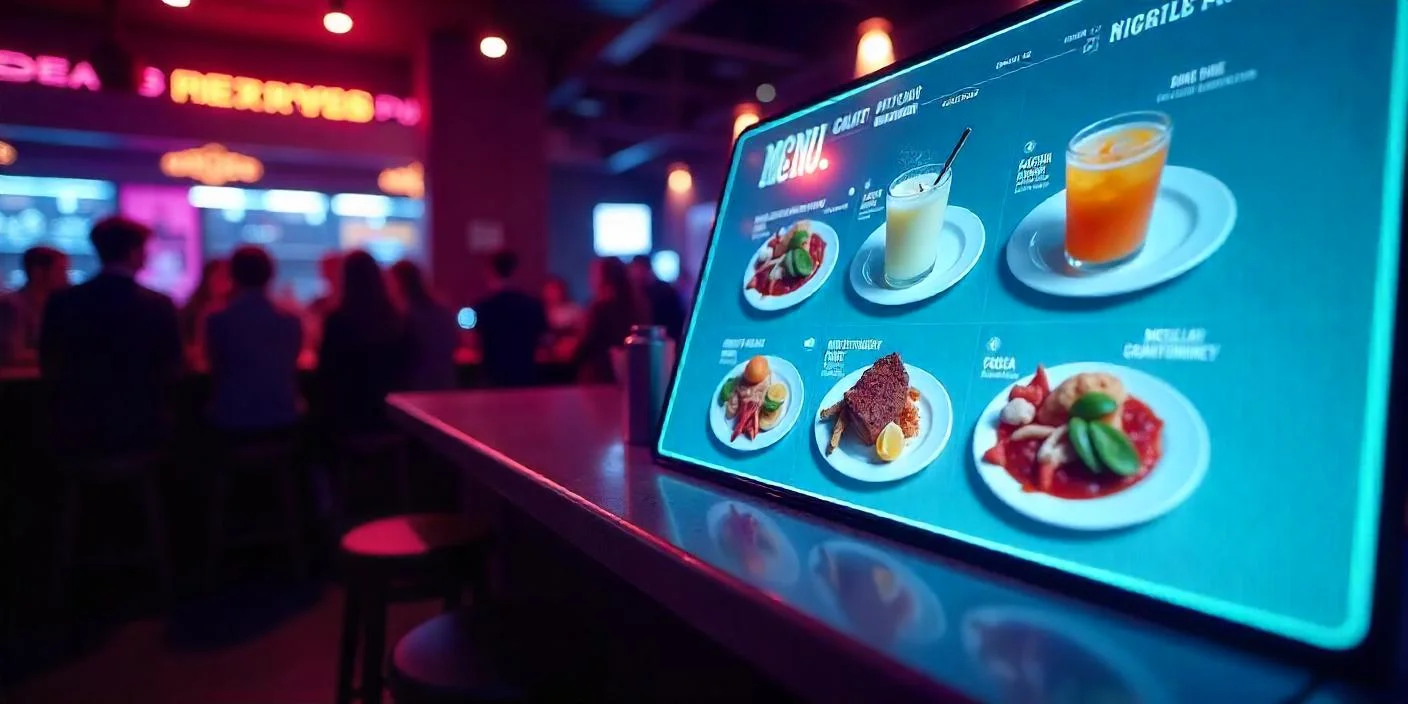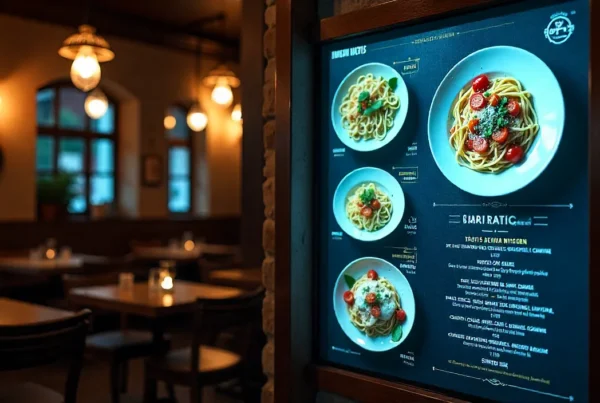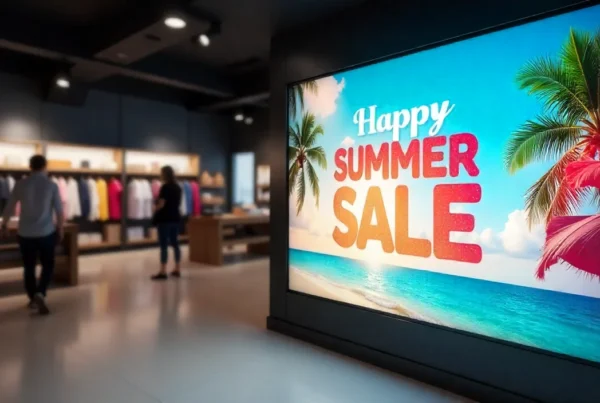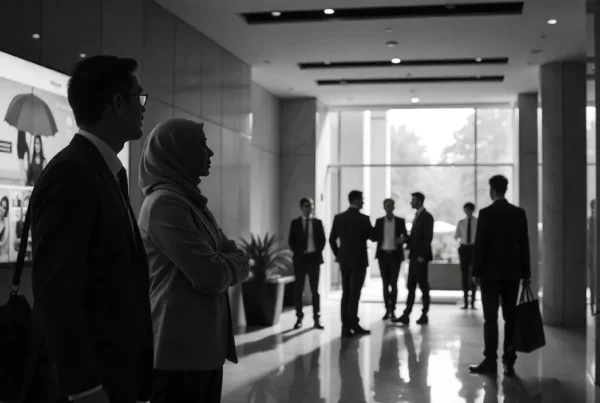In the current high-paced food and beverage environment, a countertop menu is not just a list of items offered but a point of sale that wows guests. No matter what kind of menu you run, whether it is a coffee shop menu board, a cafe menu board, or a busy restaurant menu board, the right choice in countertop display can increase sales, decrease wait time, and improve the flow of the service. This guide will take you through the basics of sleek electronic menu boards to the traditional changeable menu boards.

What Is a Countertop Menu Board?
A countertop menu display is a small display (usually digital) mounted on a counter, tabletop, or checkout station. These boards are unlike wall-mounted signage because they are within arm’s reach of a customer; hence, they are ideal when making impulse purchases and order confirmations. Modern versions run dynamic content on LCD or LED panels (also called electronic menu boards), whereas traditional static menu boards or changeable menu boards use printed panels and removable letters to allow easy updating.
Types of Countertop Menu Boards
Digital Countertop Menu Boards
These boards are powered by high-resolution screens and are integrated into your POS system to adjust prices on demand and synchronize inventory. All video advertisements, animated promotions, as well as live social feeds are running without interruption on a digital menu board located at your cashier.
Static & Changeable Menu Boards
To a company with a limited budget, removable paneled cafe menu boards or coffee shop menu boards are flexible and do not involve software expenses. Just change panels to feature daily specials or change seasonal items.
Touchscreen Menu Boards
Raise the level of interaction with tableside kitchen menu board kiosks. Customers scroll through categories, such as coffee, tea, and pastries, customize orders, and even pay, minimizing mistakes and making self-service possible.
Outdoor & Exterior Menu Board
Outdoor menu boards and exterior menu boards take your brand outside the door. The rugged displays are bright even during the day to make sure your products or services are visible to drive-thru or walk-by customers.
Why Use a Digital Countertop Menu Board?
Dynamic & Real-Time Updates
Using cloud-based digital menu boards, you can push a price change, launch a new cafeteria menu board design, or drive a flash sale in real-time, with no reprints and no downtime.
Increased Aesthetics
Bright images of your signature latte or slow pours of syrup onto a pancake are a temptation to the unplanned purchase. Motion graphics on an electronic menu board will attract attention and increase upsell by as much as 30 percent.
Space-Saving Versatility
A narrow countertop menu can accommodate the most crowded service line, allowing space on the wall to be used as decor or extra seating. Ideal both in small cafes and in food trucks.
Better Order Accuracy
Neat, clearly arranged screens allow no misunderstanding of handwriting or low-contrast chalkboards, misorders are reduced, and new staff can be trained on a restaurant menu board that is forever and always the same unless you change it.
Long-Term Cost Saving
Though digital displays incur initial investment, i.e., the cost of screens, software licensing, and installation, they are self-paying because they do not require repetitive print costs and design expenses.

Key Features of an Effective Countertop Menu Board
High-Resolution Display
Screens that have a resolution of 1080p or higher should be chosen, as this resolution will ensure that text and images are clear on your countertop menu board.
Easy-to-Update Software
Interactive digital signage software on the cloud allows you to control many menu boards for restaurants on any device, which is ideal in multi-site restaurants.
Catchy Design Elements
Use bold type, contrasting colors, and minor animation to showcase the best sellers or time-limited offers.
Touchscreen Capability (Optional)
Interactive kiosks can be used to boost dwelling time and engagement, which is perfect for use in self-service cafes and contemporary coffee shop menu boards.
Weatherproof (outside Application)
The exterior menu boards must have IP-rated enclosures and anti-glare paint, as they are exposed to sunlight and rain.
Design Tips for Countertop Menu Boards
Organizing by Category
Categorize things by obvious headings, such as “Espresso Drinks,” “Bakery Items,” and “Cold Brew,” which allows customers to read your restaurant menu board design within a few seconds.
Strategic Highlight Promotions
When you want to advertise a special promotion, such as a buy-one-get-one or a new seasonal flavor, use colored borders or animated callouts to attract attention.
Leverage High-Quality Imagery
The food photography needs to be appealing both on the screen and on the table. Cravings and conversion are driven by professional images on your cafe menu board.
Make Text Easy to Read
Make sure you use fonts that are big enough to be read in close range, at least 30px on body text, and keep the text and background in high contrast.
Ensure Brand Consistency
Apply your logo, brand colors, and tone to the interface. A consistent appearance in digital signage in restaurants creates recognition and confidence.
Who Should Use Countertop Menu Boards?
• Quick-Service Restaurants & Cafés: Accelerate the ordering process and emphasize combos on a coffee shop menu board.
• Food Trucks & Pop-Ups: A mobile countertop menu will give you a professional look without having to install it permanently.
• Corporate Cafeterias & Food Courts: Multiple vendor menu boards can be used to rotate the vendors and deal with a high volume.
• Bars & Pubs: Display drink specials or happy-hour specials on a professional-looking counter service menu board.
• Multi-Location Chains: To avoid discrepancies in menu boards at each restaurant, centralized control of all the menu boards is done to quickly update the menu boards.

Elevate Your Countertop Menu Today!
Nento countertop menu solutions will replace your point-of-sale with a dynamic sales driver. Whether it is digital menu boards and interactive digital signage software, digital signage services, or reseller digital signage opportunities, we have everything to enable you to display menus, promotions, and brand stories, all within the reach of your guests.
Talk to Nento today about your delay and get a free demo, view free restaurant layout templates, and learn how our customizable solutions can customize any facility or budget.
FAQs About Countertop Menu Boards
How much does a digital countertop menu board cost?
These cost between 200 dollars (a basic 10-inch tablet setup) and 2000+ dollars (interactive touch screens and commercial licenses).
Can I use a tablet as a countertop menu board?
Tablets with menu board apps are a cost-effective way, yes, but they are not as bright or durable as dedicated electronic menu boards.
How often should I update content?
A changeable menu board can be updated weekly, and the daily adjustments (such as a pastry special) will increase impulse orders.
Are digital countertop menu boards energy-efficient?
Contemporary LED panels use little power, typically less than an ordinary office lamp, and sleep modes use even less.
Can digital countertop menus integrate with POS?
The majority of the interactive digital signage software integrates with the most popular POS systems that guarantee real-time pricing and inventory accuracy.
Do I need Wi-Fi for updates?
Yes, the cloud-based systems still need an internet connection, and there are solutions that provide offline caching so that playback is not affected.
What about outdoor countertop menu boards?
Outdoor models are available in rugged, IP65-rated enclosures and high-nit panels that can be read in the sunlight and are well suited to patio or sidewalk cafe installations.





